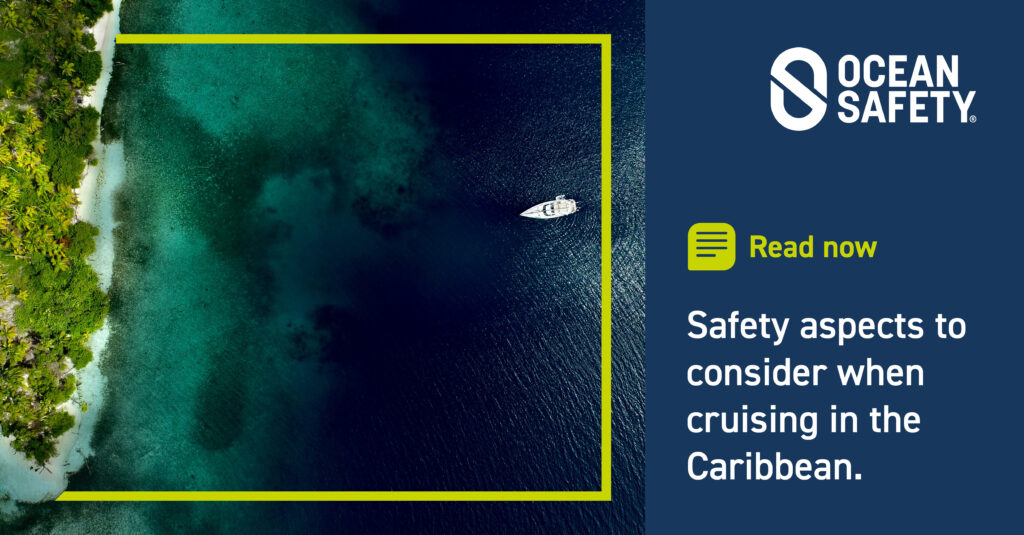It’s Caribbean charter time. You’ve packed your sunscreen and bikini, topped up your Spotify downloads and bought a new floppy hat. All that personal stuff can be left to common sense, but what about safety?
In the winter months when most of us want to be there, the trade winds blow up to Force 7 in a lively week. You can certainly expect Force 4 – 5. For much of the time you’ll be in calm water in the lee of the islands, but you may venture out into the open with seas of up to 8 feet coming all the way from Africa. You won’t be sailing after dark, because most charter operators ban this unless a special arrangement is made.
Against this background, think ‘safety equipment’.
Partly due to the warm conditions and partly because of more relaxed regulations, Caribbean charter yachts are not equipped to the same high standards as yachts in home waters. Here’s what you’ll probably find on board:
- Lifejackets. Bear in mind that very few people here wear lifejackets as a matter of course. The kit supplied may be the modern units you’re used to, but some older yachts still have the unwieldy foam jackets of yesteryear. You certainly won’t want to wear these all the time, so if that’s going to be an issue, call your operator and see what the boat has. If you don’t like it, take your own, especially if you have children with you. Standard on-board kit is adults-only. Also, check on the procedure of what you should do, if a lifejacket goes off and needs re-arming.
- Harnesses. All yachts should be equipped with these harnesses. Bear in mind that the jackstays which are a legal requirement if you’re chartering from the Hamble are not mandatory in the Caribbean and most boats don’t have them. Some charterers who like these have taken a roll of webbing with them in their luggage and lashed up jackstays on the boat.
- Liferaft. Sunsail boats all carry one. All charter yachts tow dinghies and in the past, these were considered adequate. With some operators they still are. Check with your company if you’re concerned.
- Flare pack. Most companies carry a useful flare pack, however you may want to pack your own LED flare.
- VHF. All charter yachts will be quipped with a VHF, but most do not have a hand-held option. If you want this, bring your own.
- First-aid kit. These vary from useful to very basic. It’s worth discussing what you’re going to find with your operator, then top up if necessary via your hold baggage.
- Torches, firefighting etc. All boats from reputable firms carry proper fire extinguishers. Most will have torches.However, always advisable to bring your own. Top Tip – clip small waterproof bike lights onto kids lifejackets for any nighttime tender transfers
- EPIRB and PLBs – Yachts don’t have EPIRBs. If you want a PLB, pack your own!
When you board the yacht it’s worth checking that all their kit is in date where appropriate. Don’t assume it is. If it isn’t, make a fuss and demand a substitution. Check where all the pumps are and that they work, inspect any man-overboard gear, make sure it’s functional and that you know where it is.
Like any sailing, the best safety equipment is the skipper and crew, looking out for trouble before it happens and making sure it doesn’t. Sailing in the Caribbean is some of the best the world has to offer. Sheet in, hang on tight and have a great time!

